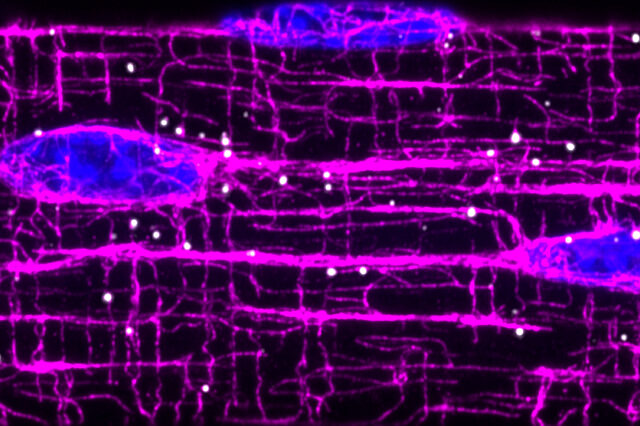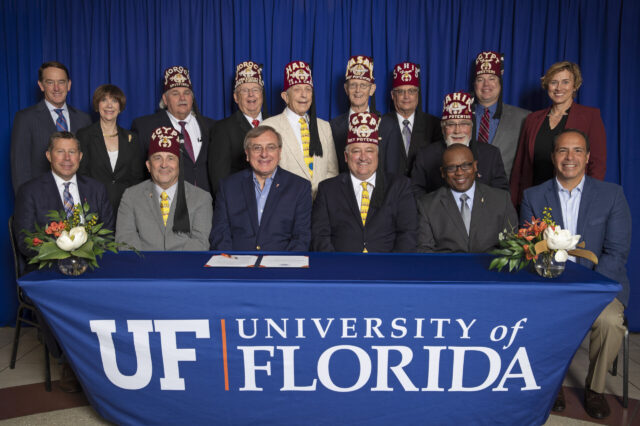Definition
Skeletal limb abnormalities encompass a variety of bone structure problems in the arms or legs (limbs). This can be related to limb length differences or limb deformities, and a limb can be affected either partially or entirely. Meanwhile, the condition can become worse as a child grows based on the degree of length, bend or rotation.
These abnormalities can be present at birth, but they can develop afterwards if a person has an injury or disease that affects bone structure.
Regardless of whether the limb deformity or deficiency is congenital or acquired, the Shriners Center of Excellence at UF Health, nationally recognized for its performance in pediatric orthopaedic care, will identify the type and severity, then help you find a solution.
Congenital abnormalities
Abnormalities that are present at birth are congenital, and they are rare.
According to the Centers for Disease Control and Prevention (CDC), about 1,500 babies in the United States are born with upper limb reductions (4 out of 10,000), and about 750 are born with lower limb reductions (2 out of 10,000). Out of this population, there is an unspecified number that have both types of defects.
Although the exact causes of congenital abnormalities are unknown, there are several potential risk factors:
- Exposure to chemicals, medications or viruses before birth
- Tobacco use by the pregnant mother (CDC indicates more research is needed here)
- Congenital constriction band syndrome (bands of amniotic tissue get tangled in the child’s arms or legs before birth)
- Having other kinds of abnormalities
Acquired abnormalities
Abnormalities that occur after birth are acquired.
In these cases, a child is born with normal limbs but they suffer a bone fracture during childhood that results in abnormal limb development. Acquired abnormalities can also be caused by one of the following diseases that impact bone structure:
Treatment
Finding a solution for limb deformities or deficiencies will be predicated on several factors. Of course, the type and severity of the abnormality are assessed. Meanwhile, there are considerations related to the child, such as his/her age as well as tolerance for specific medications, procedures and therapies.
Function and appearance are the main focus when it comes to treatment of limb abnormalities. Each child’s case is handled based on their individual needs, typically following one of these four approaches:
• Orthotics (splints or braces)
• Prosthetics (artificial limbs)
• Rehabilitation
• Surgery
What to expect at your office visit
An infant with limb abnormalities generally has other symptoms and signs that, when taken together, define a specific syndrome or condition or give a clue as to the cause of the abnormality. Diagnosis is based on a family history, medical history and thorough physical evaluation.
Medical history questions may include:
• Does anyone in your family have skeletal abnormalities?
• Were there any problems during pregnancy?
• What drugs or medicines were taken during the pregnancy?
• What other symptoms or abnormalities are present?
Other tests such as
chromosome studies, enzyme assays, X-rays and metabolic studies may be done.
Outlook (Prognosis)
Limb abnormalities may present limitations for some children throughout life, but they can enjoy long, strong and productive lives with appropriate treatment and care.
References
Deeney VF, Arnold J, Moreland MS, Ward WT, Davis HW. Orthopedics. In: Zitelli BJ, McIntire SC, Nowalk AJ, eds. Atlas of Pediatric Physical Diagnosis. 6th ed. Philadelphia, PA: Elsevier Saunders; 2012:chap 21.
Herring JA. Skeletal dysplasias. In: Herring JA, ed. Tachdjian's Pediatric Orthopaedics. 5th ed. Philadelphia, PA: Elsevier Saunders; 2014:chap 40.
Moore KL, Persaud V, Torchia MG. Skeletal system. In: Moore KL, Persaud V, Torchia MG, eds. The Developing Human: Clinically Oriented Embryology. 10th ed. Philadelphia, PA: Elsevier; 2016:chap 14.
Review Date
8/13/2018
Reviewed By
Dr. Laurel Blakemore, MD, Division Chief, Pediatric Orthopaedics


